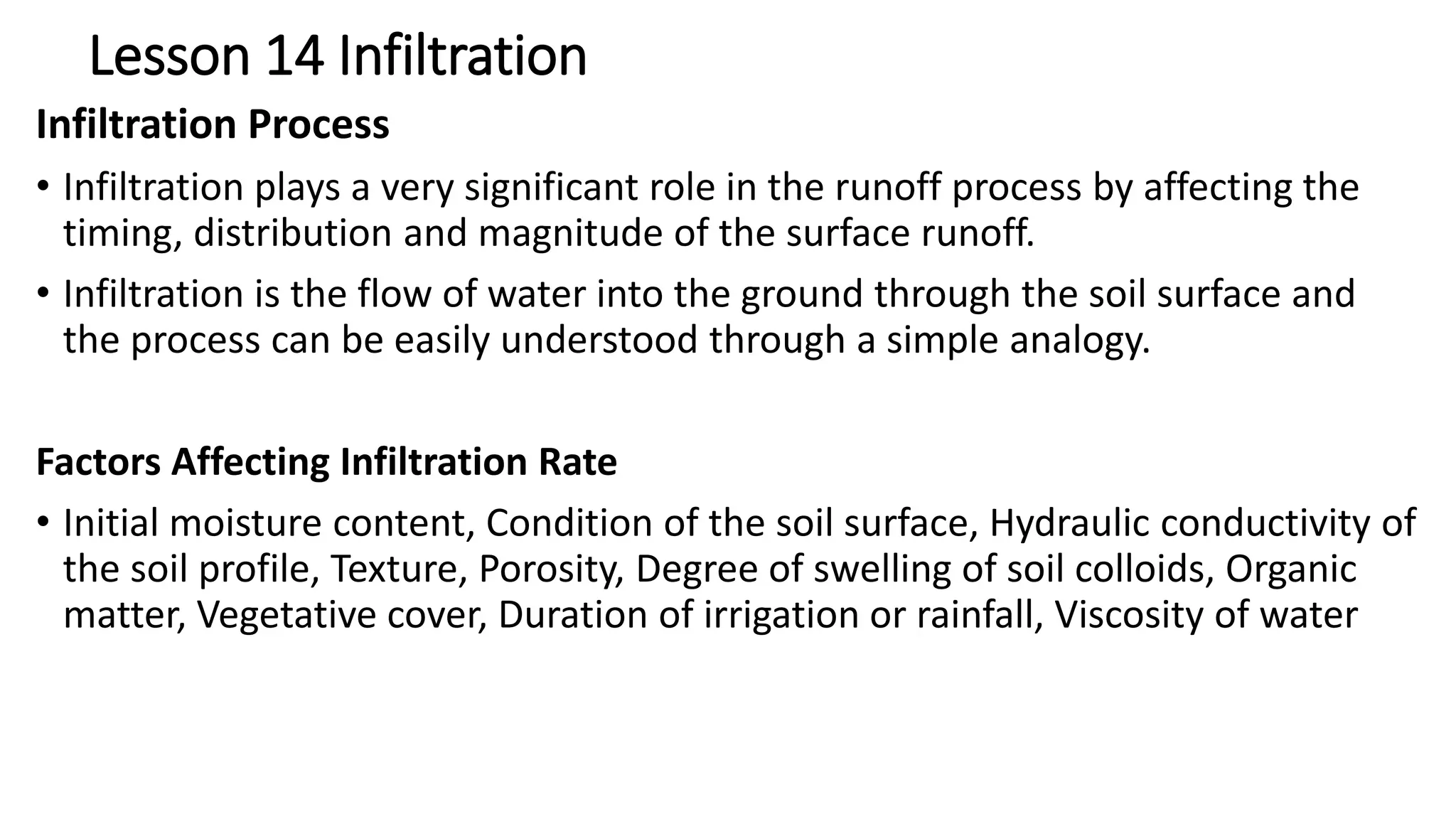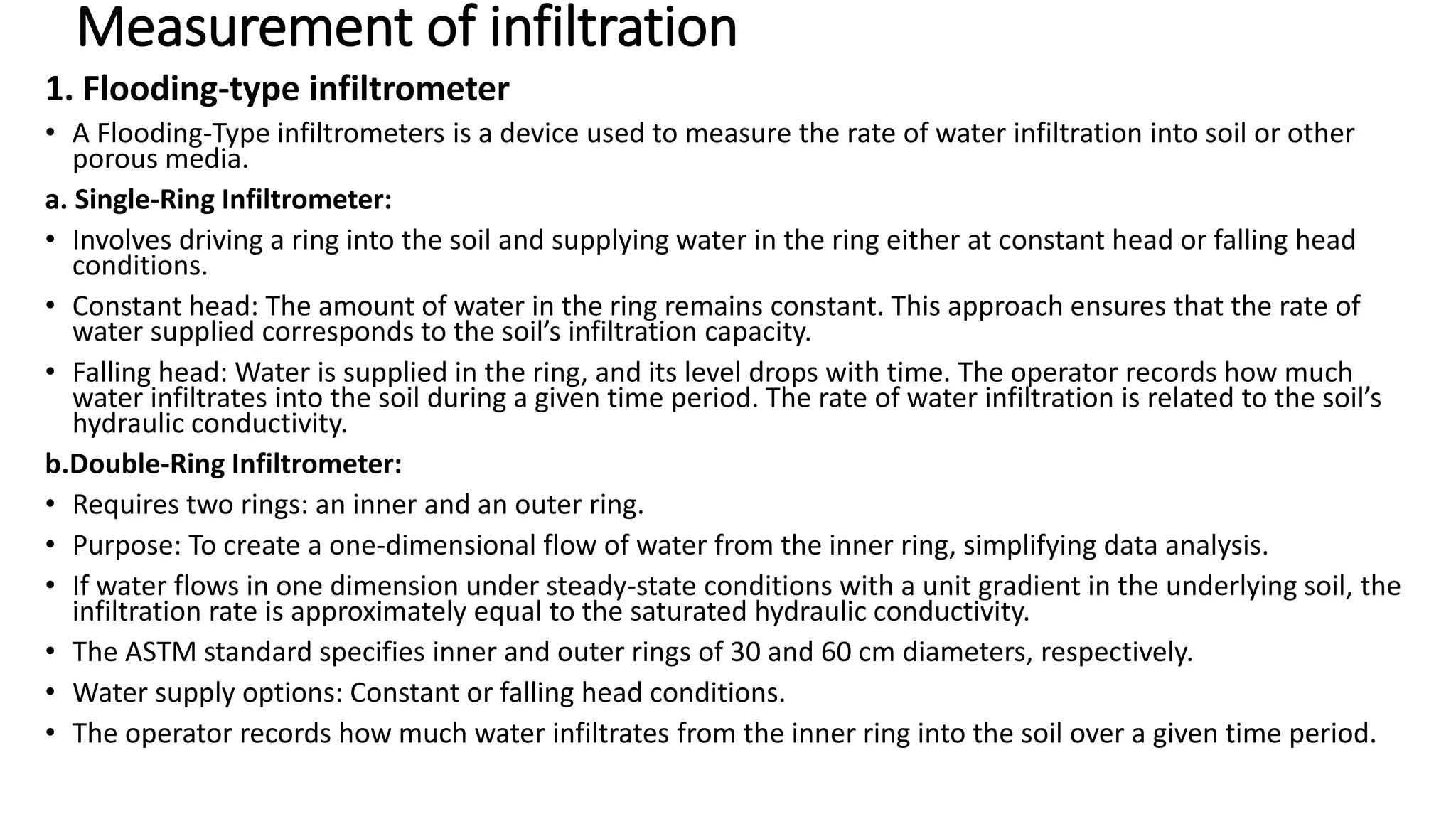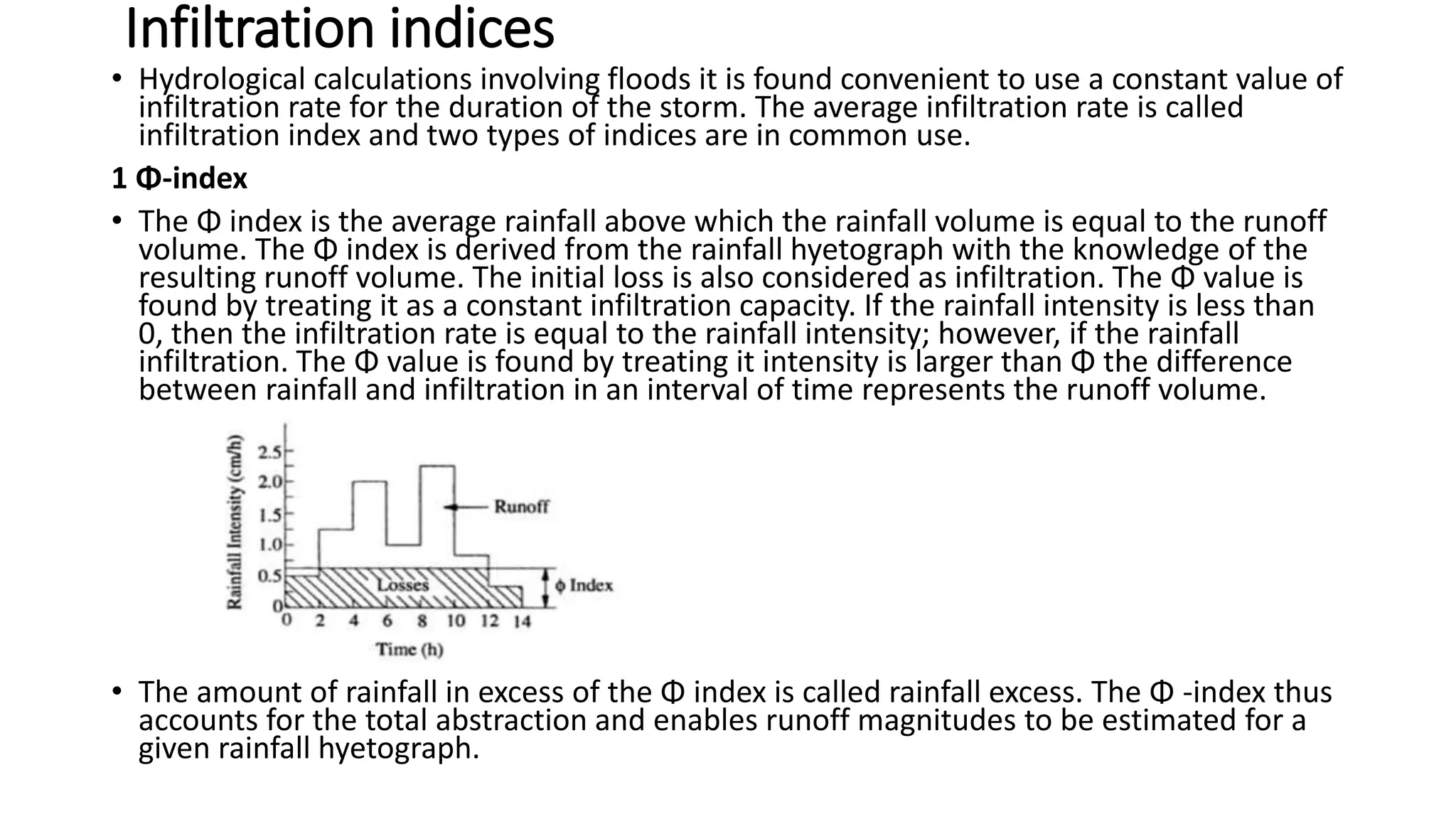This document provides information on estimating mean areal rainfall using different techniques like the arithmetic method, Thiessen polygon method, and isohyetal method. It also discusses frequency analysis of point rainfall, including plotting position formulae and developing intensity-duration-frequency curves. Finally, it covers hydrological abstractions like interception loss and depression storage. Interception loss depends on factors like canopy storage capacity, rainfall duration and intensity, while depression storage varies based on land use and storm characteristics.

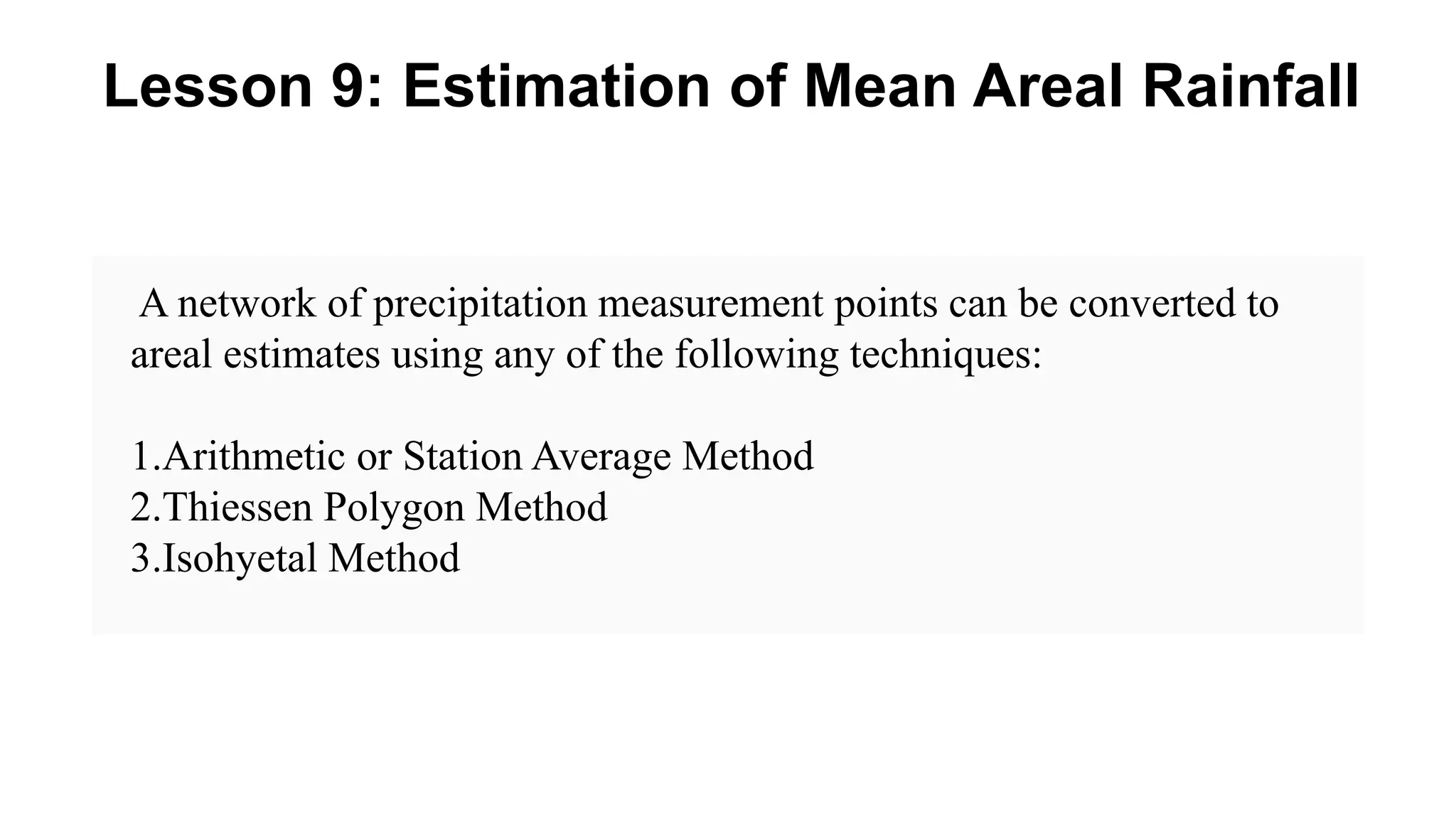
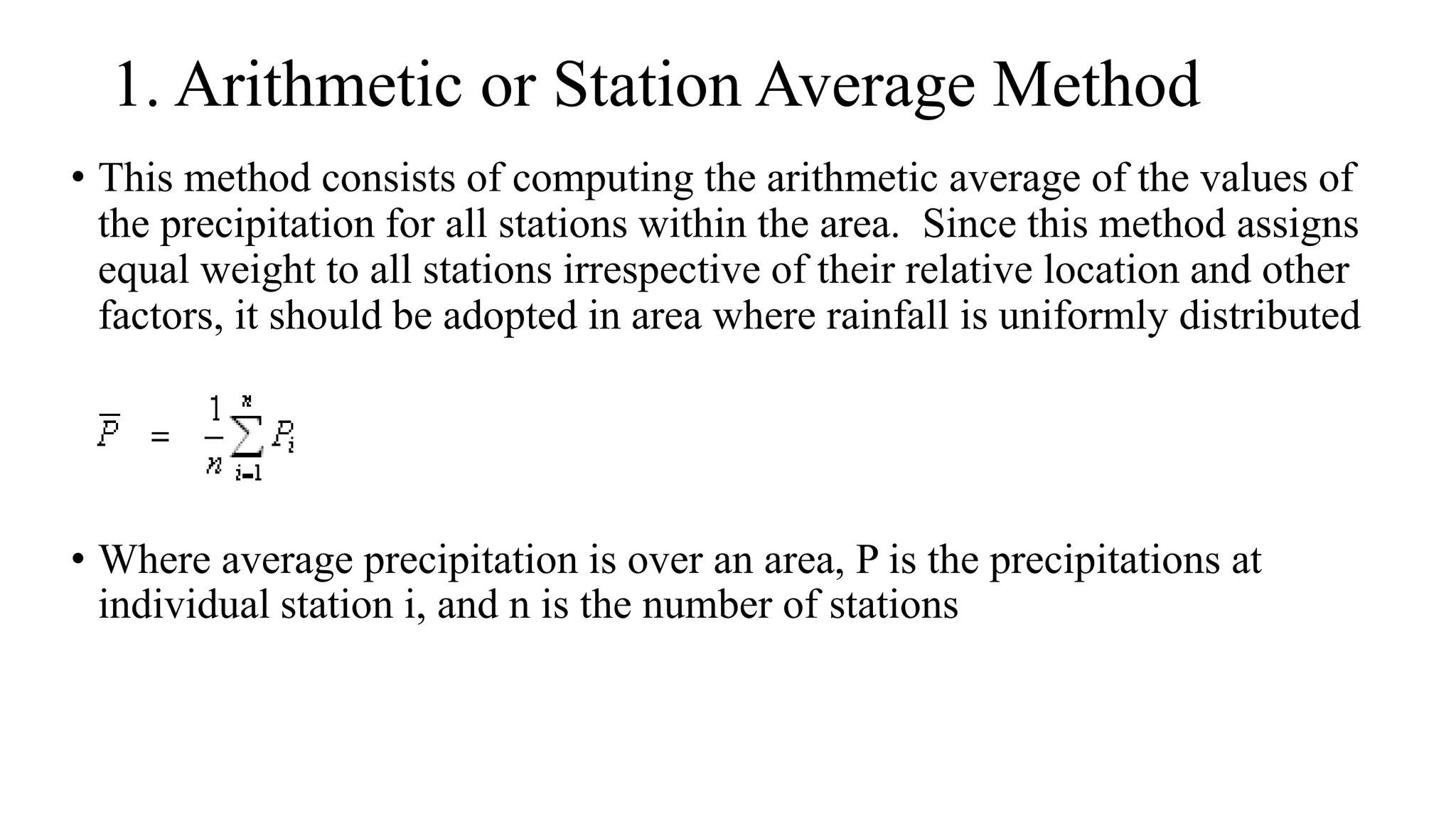
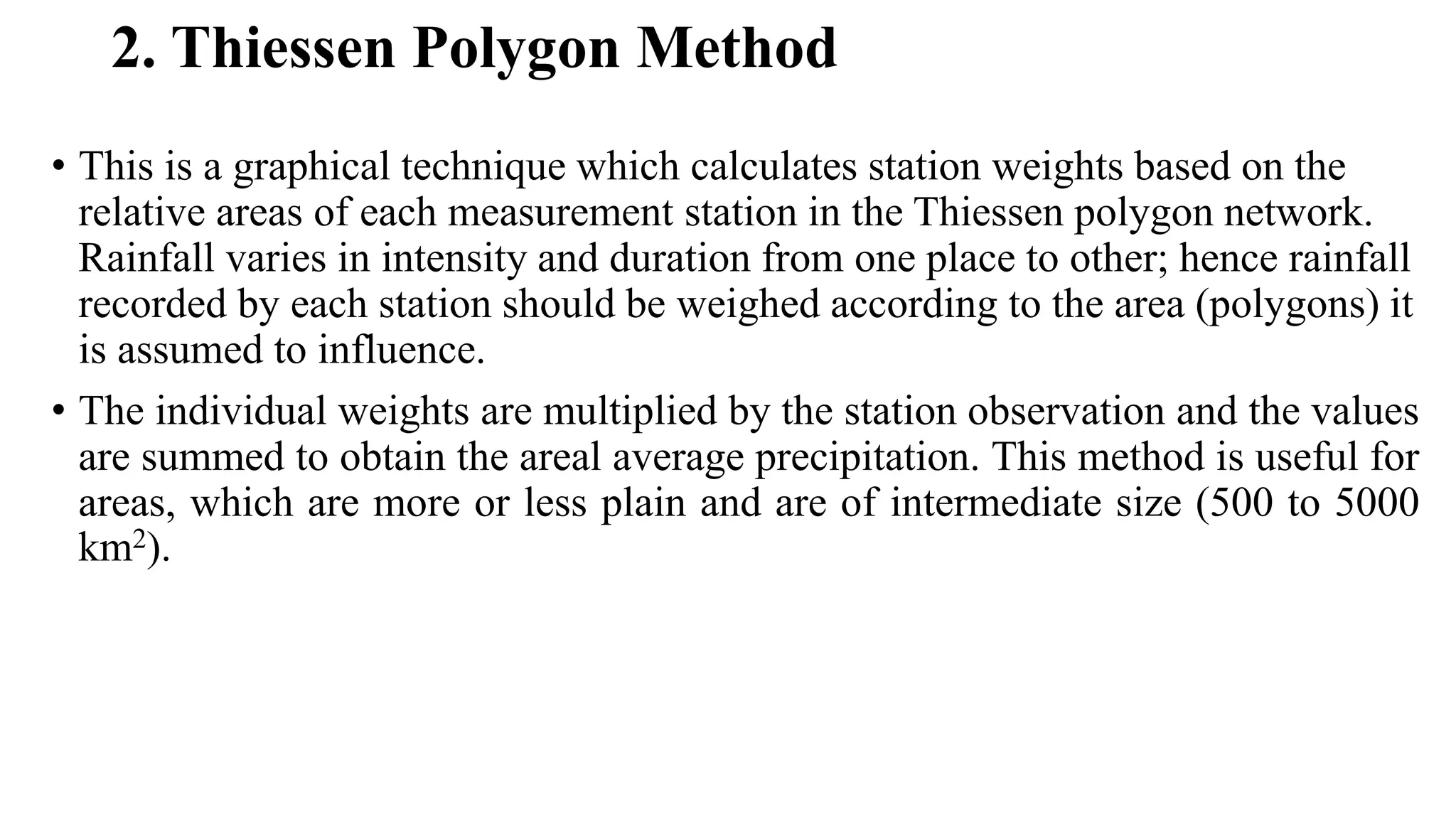


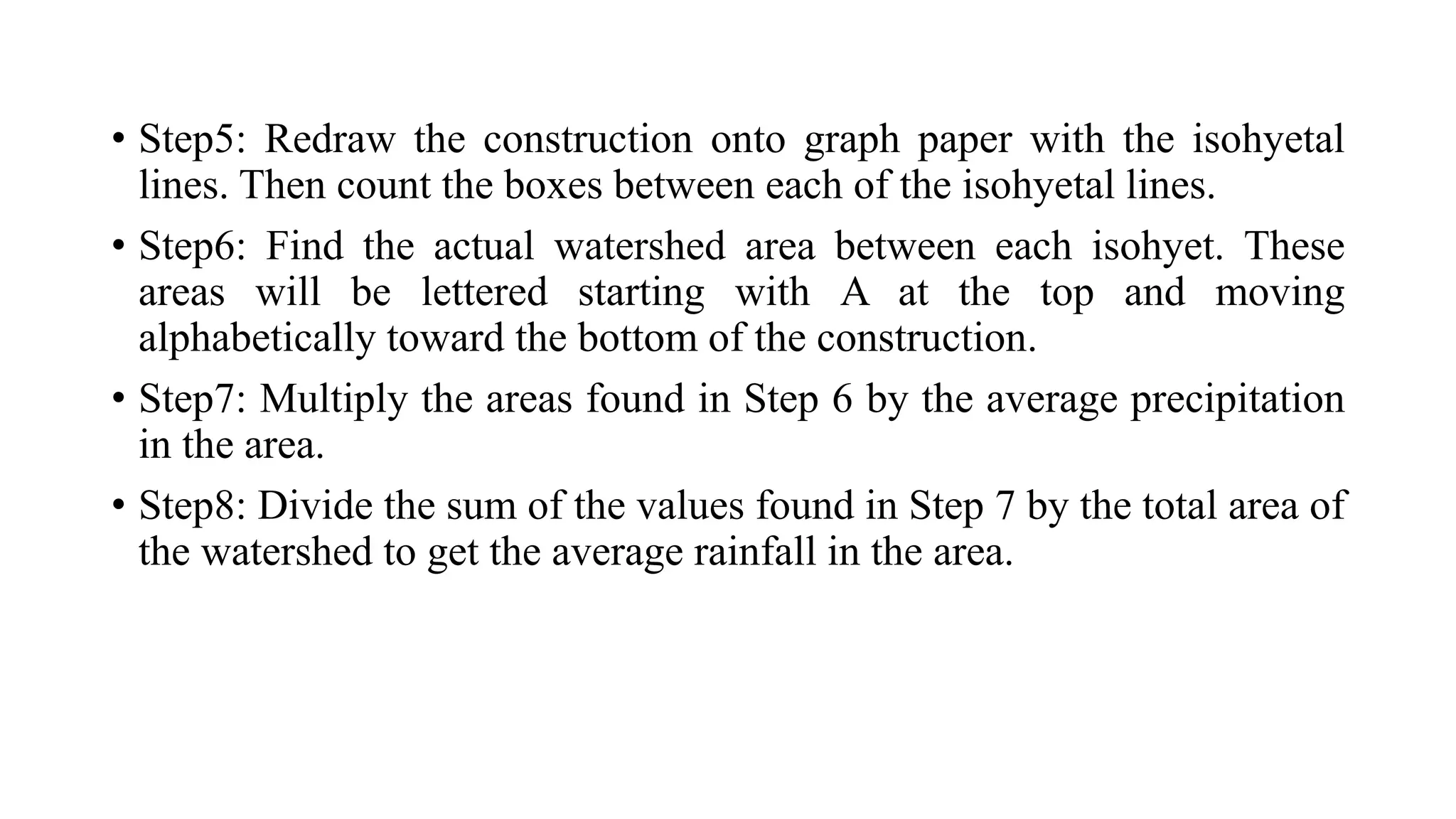
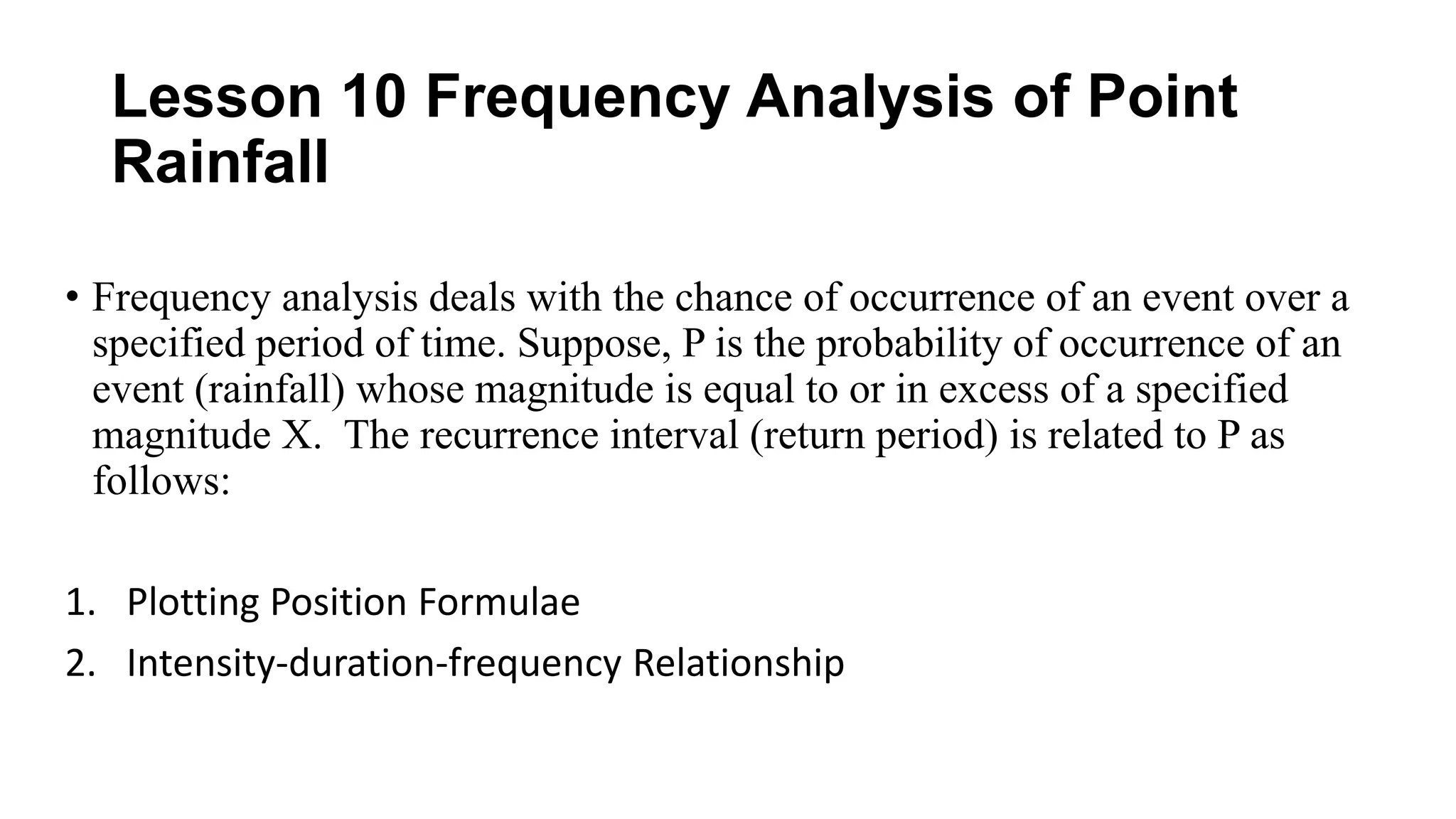
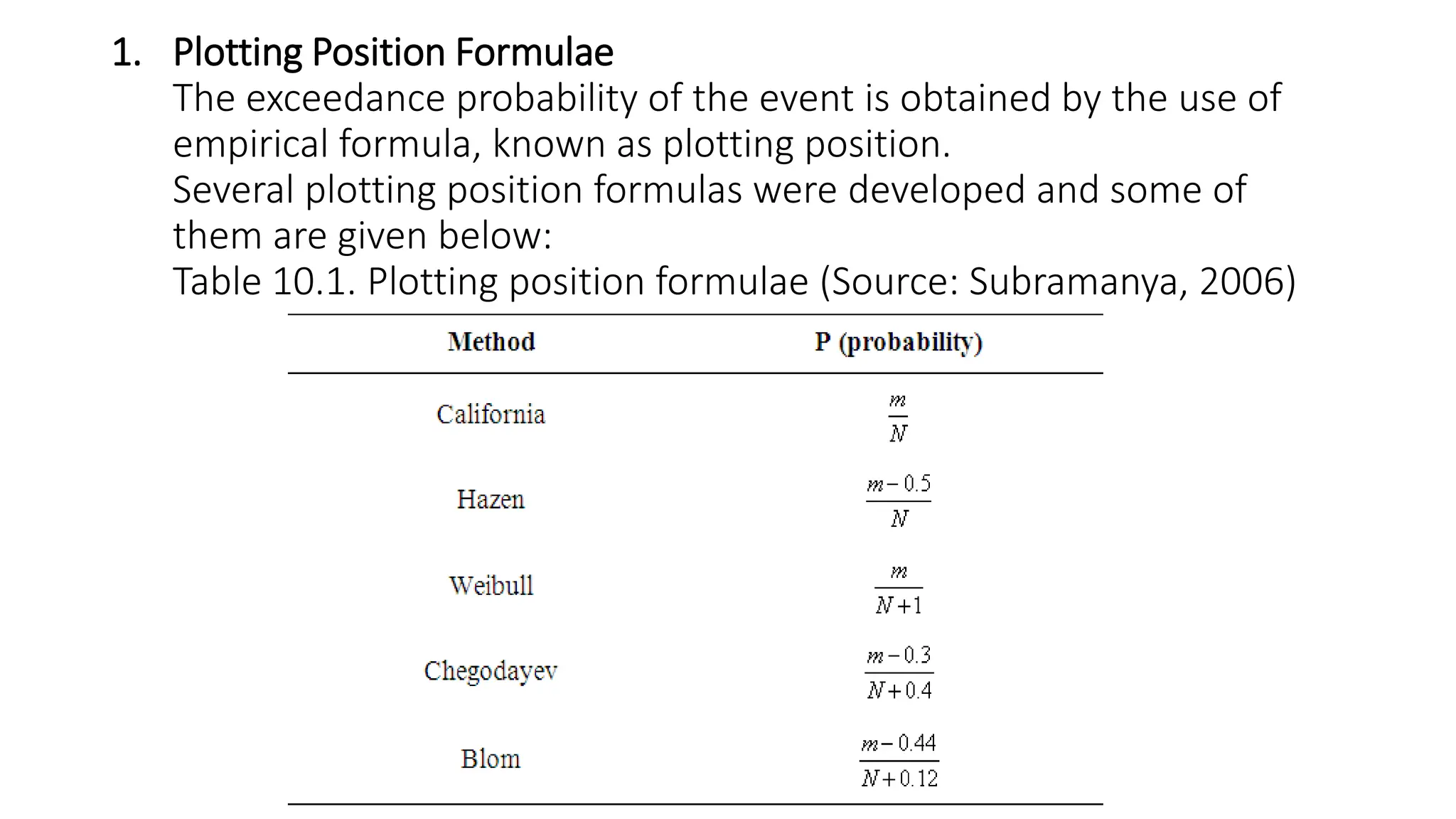
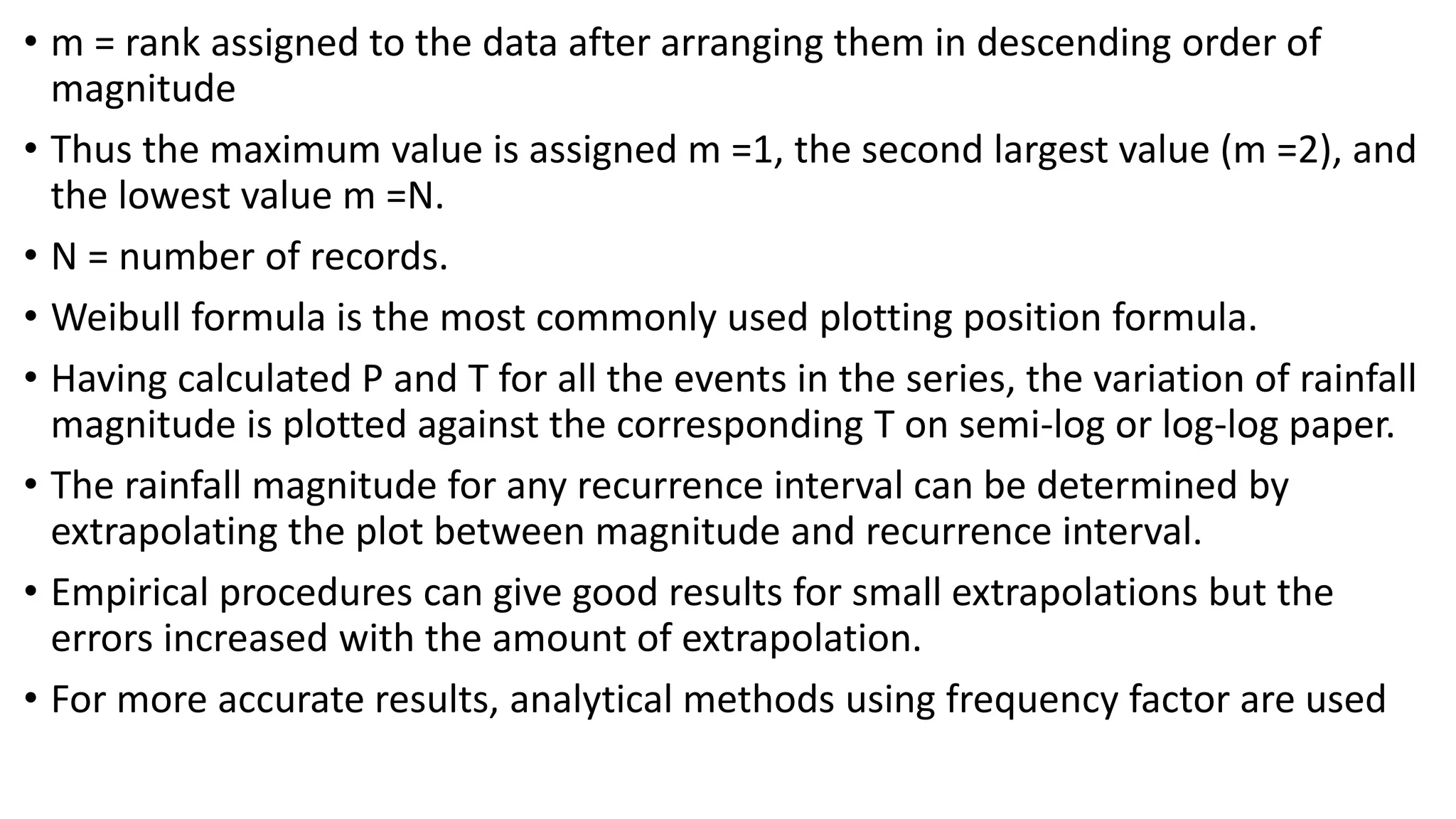


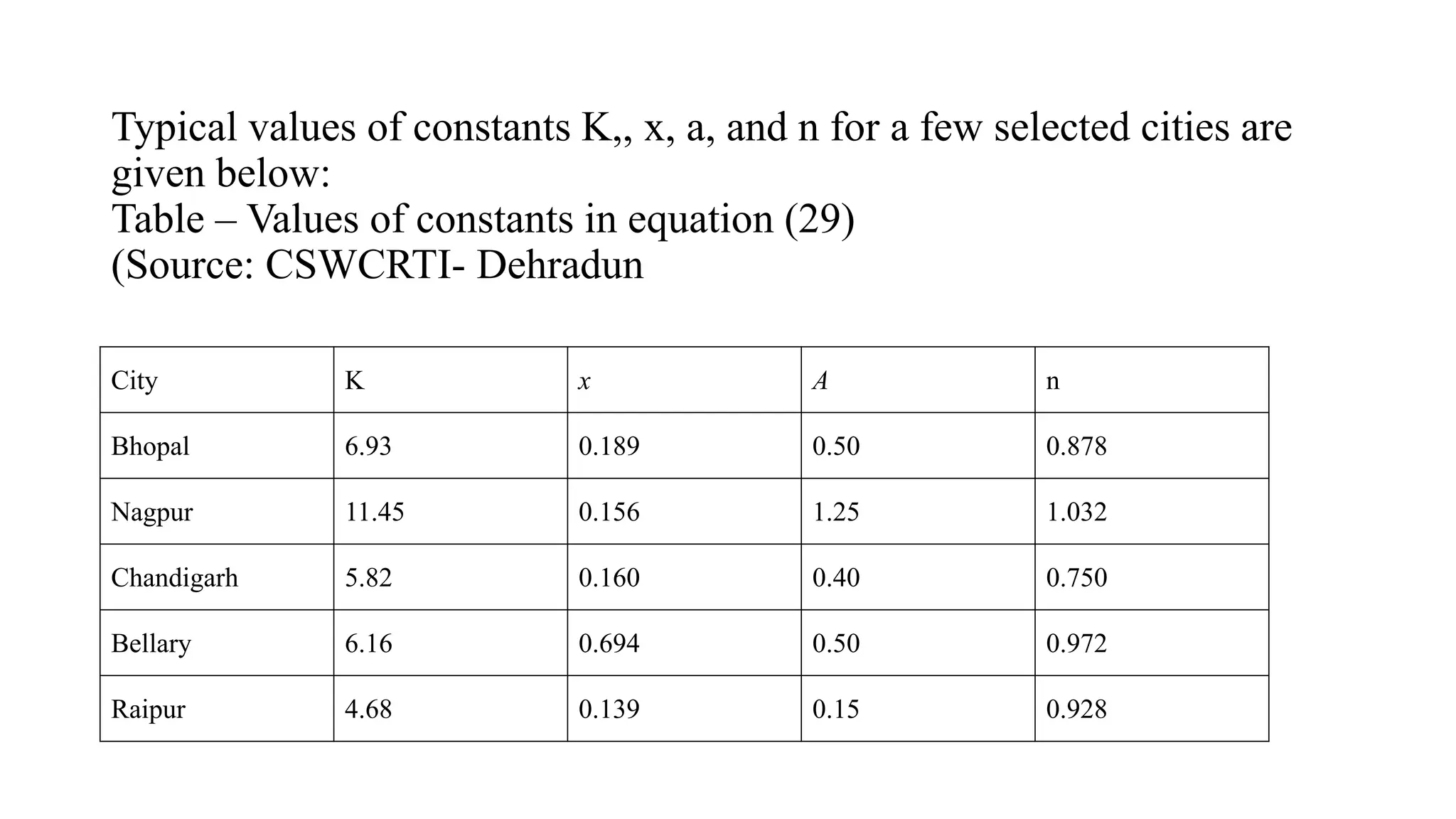
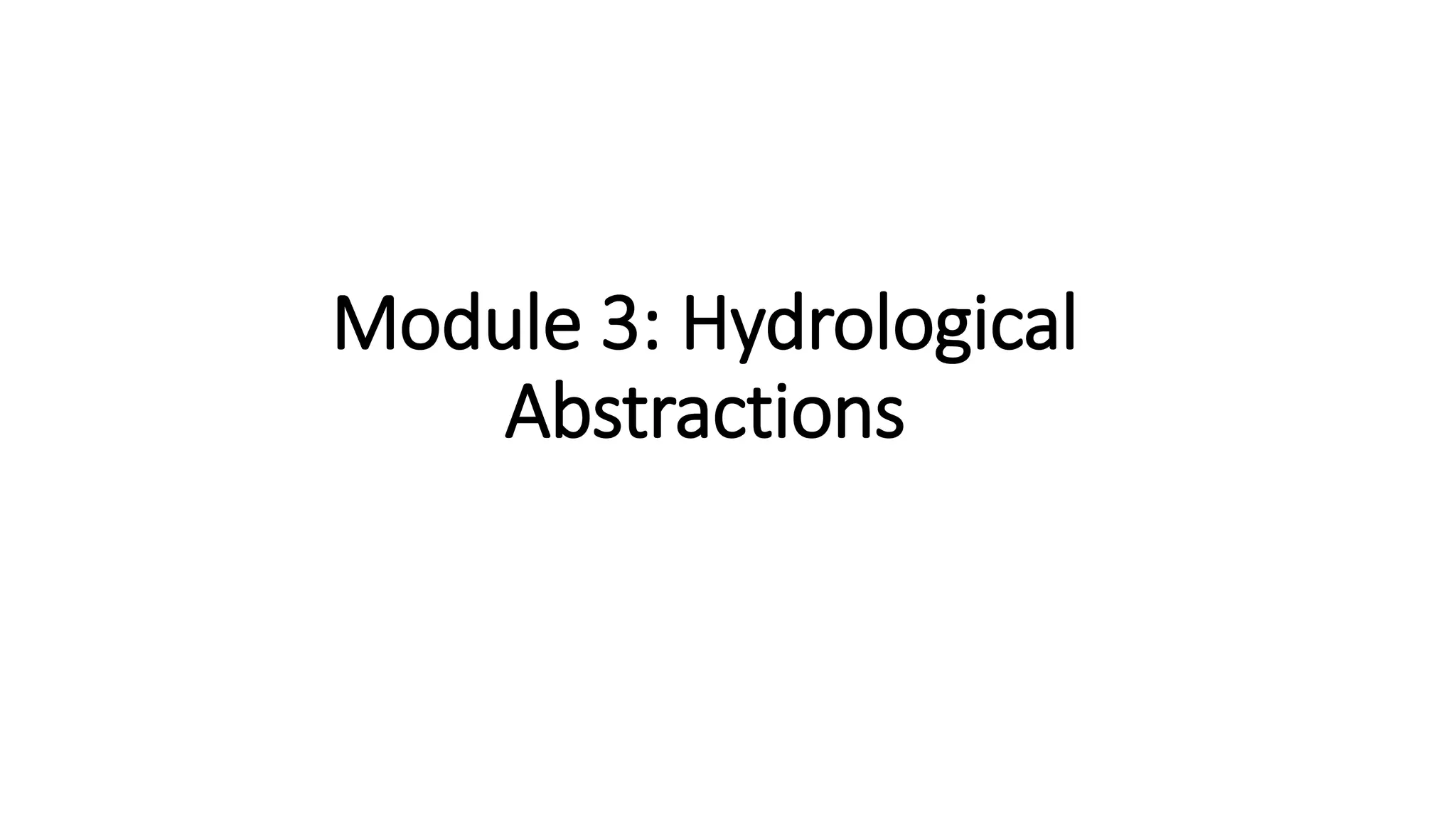

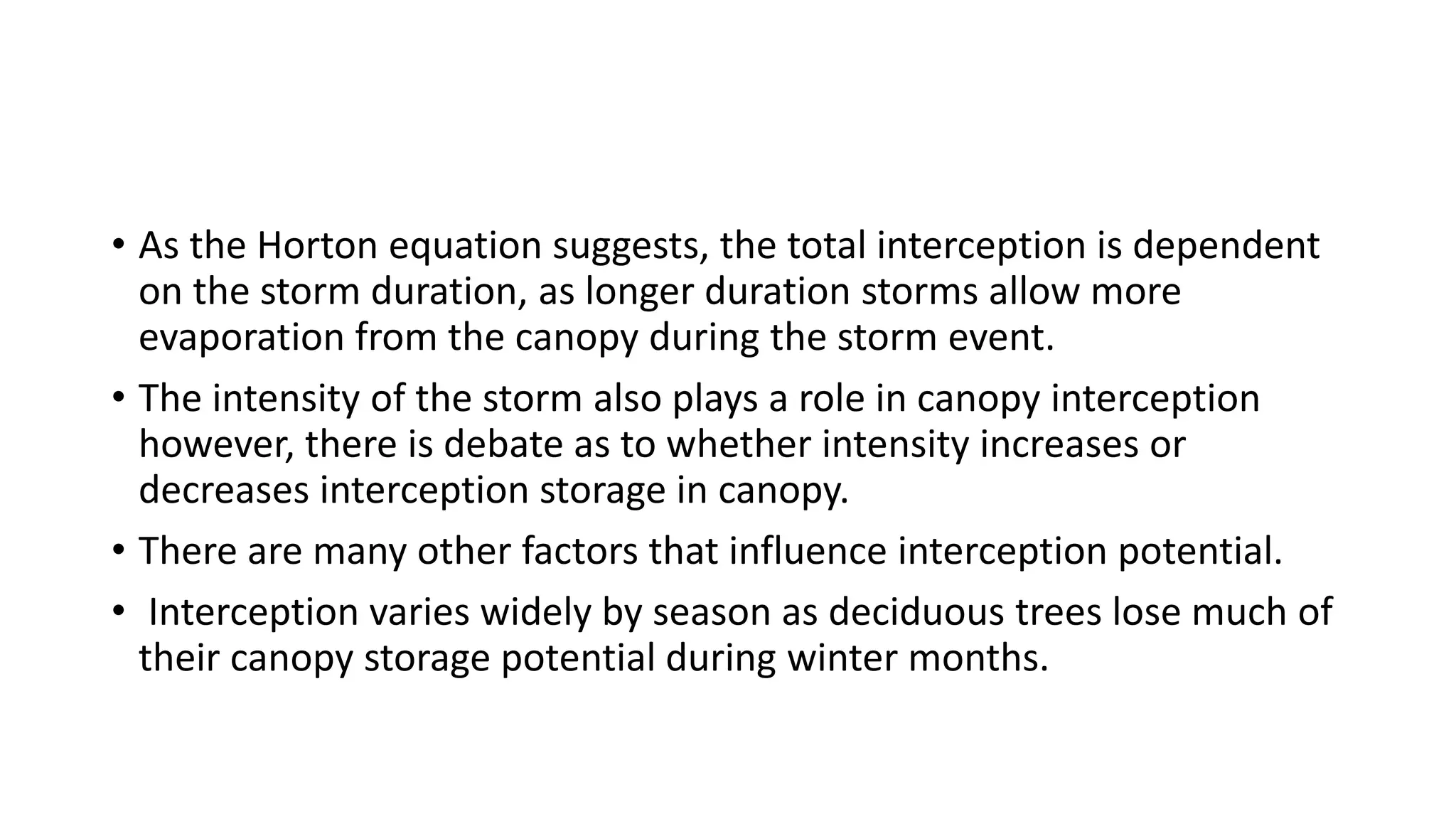









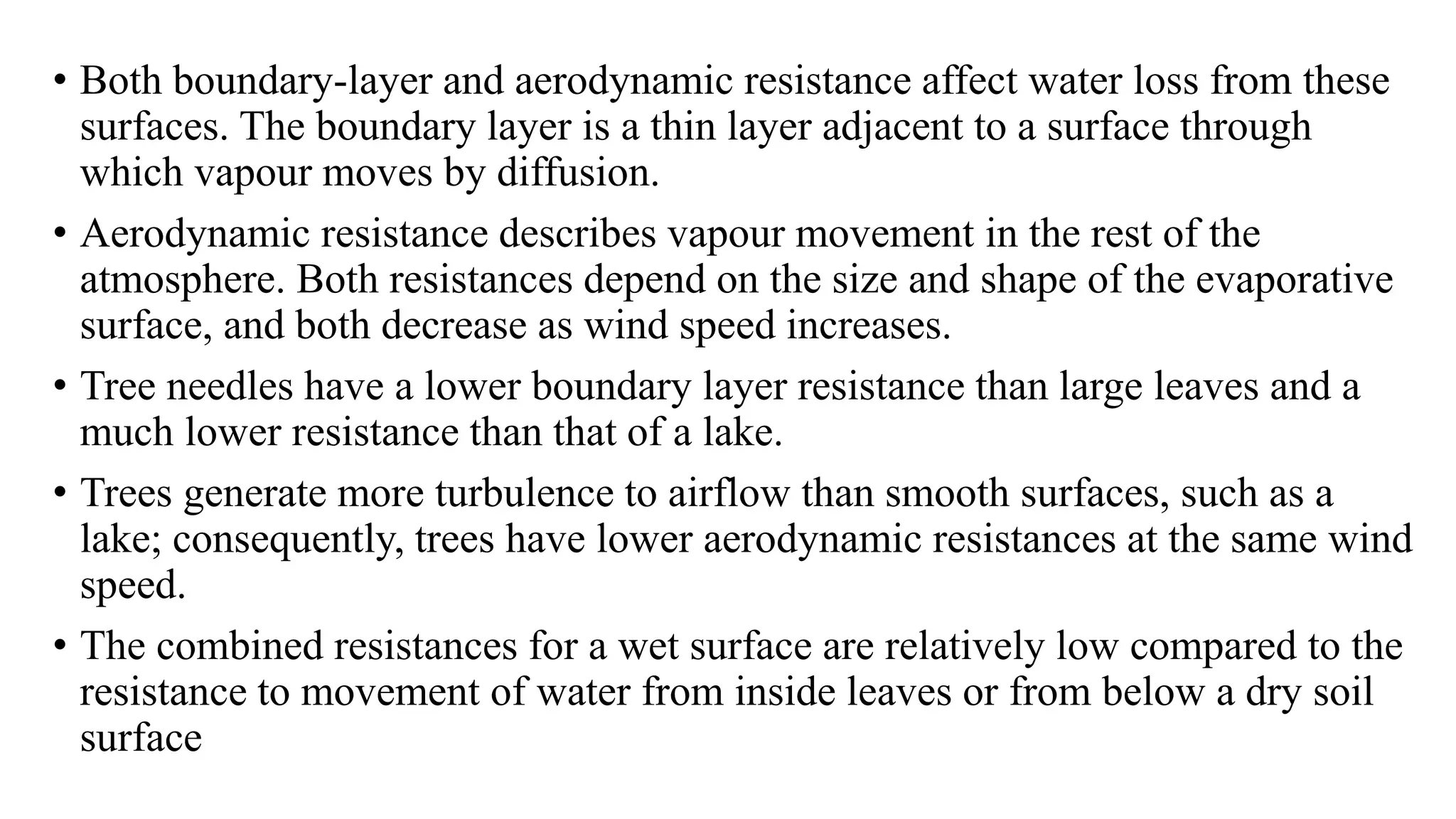
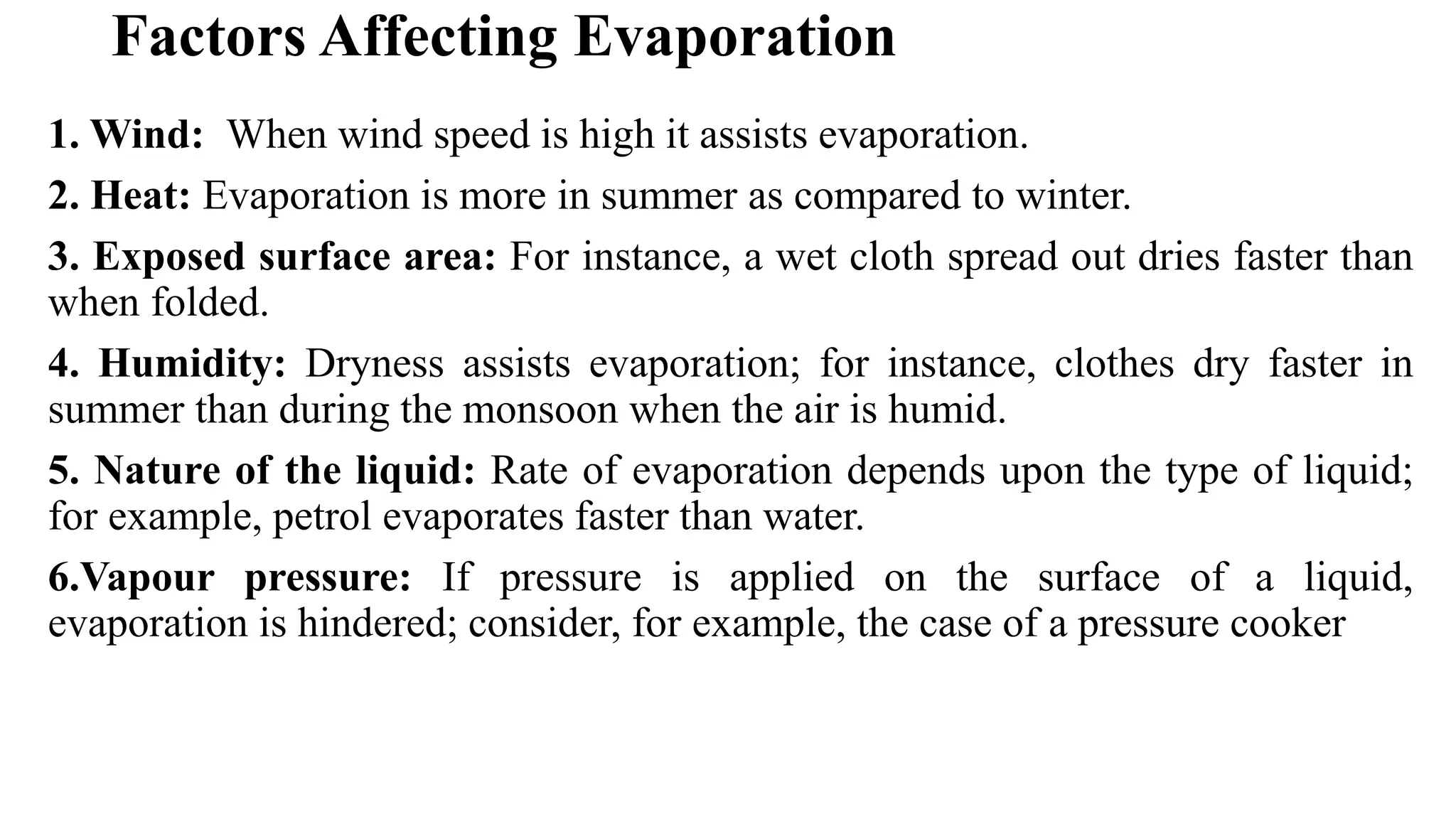



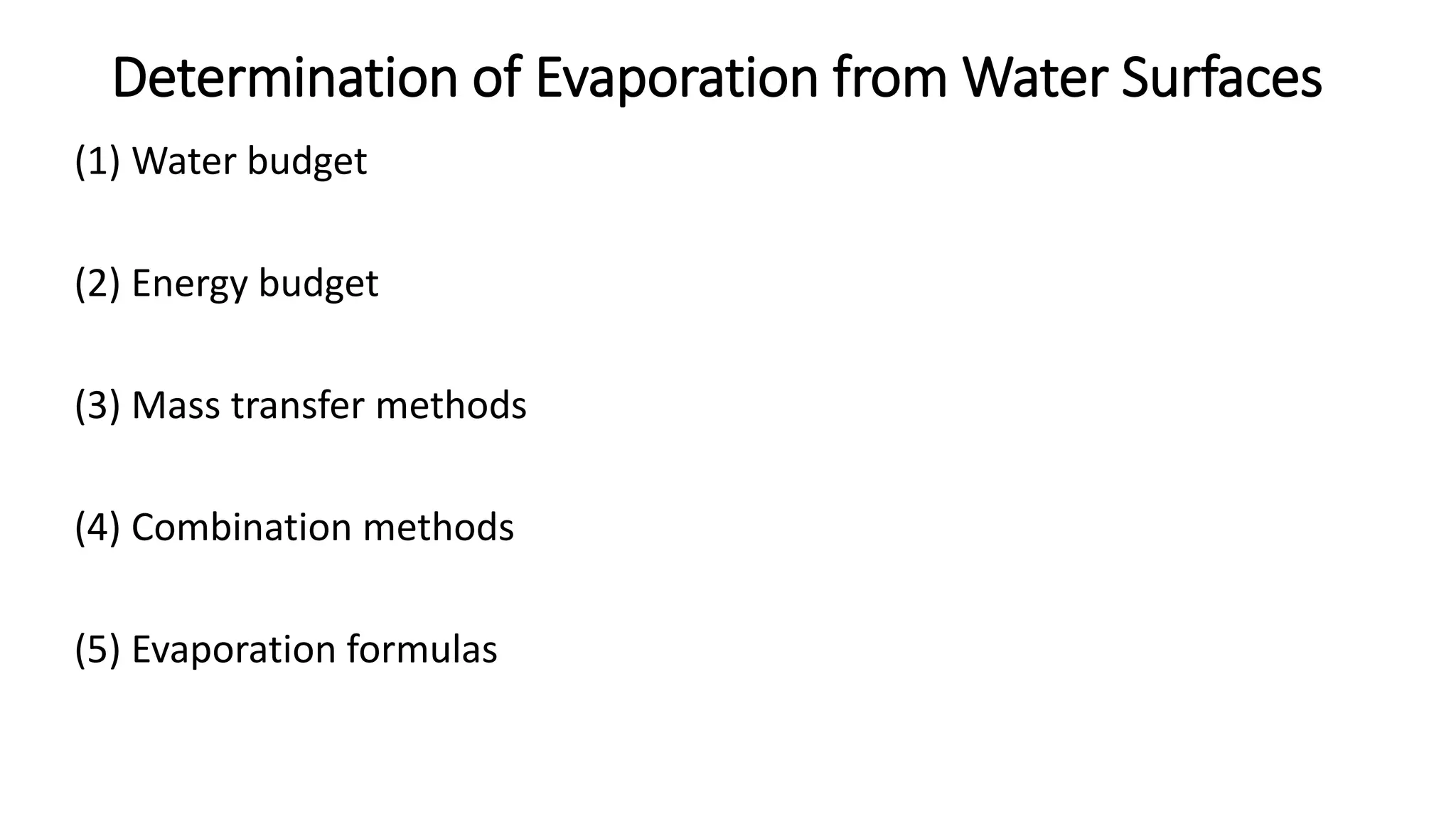
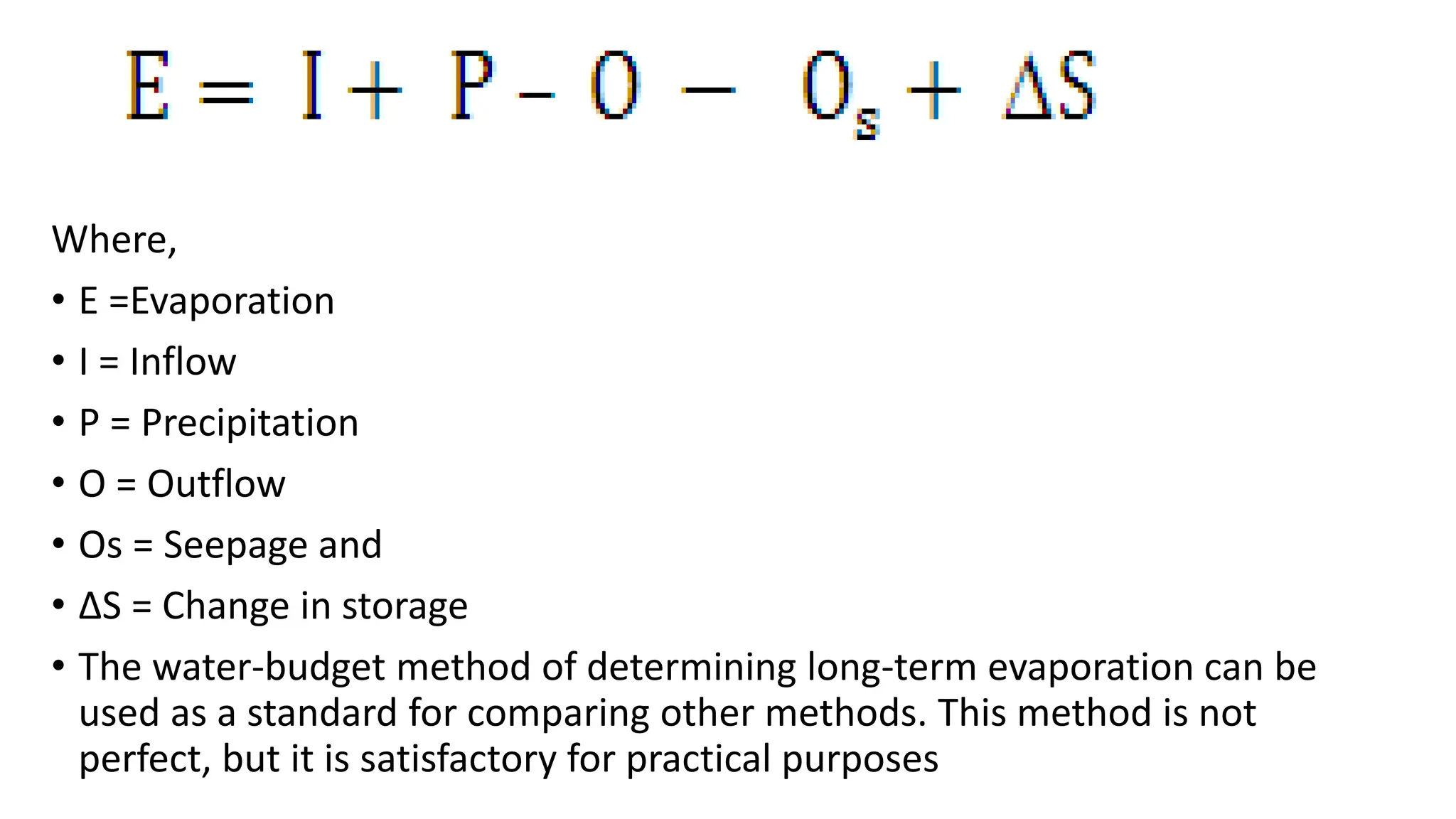

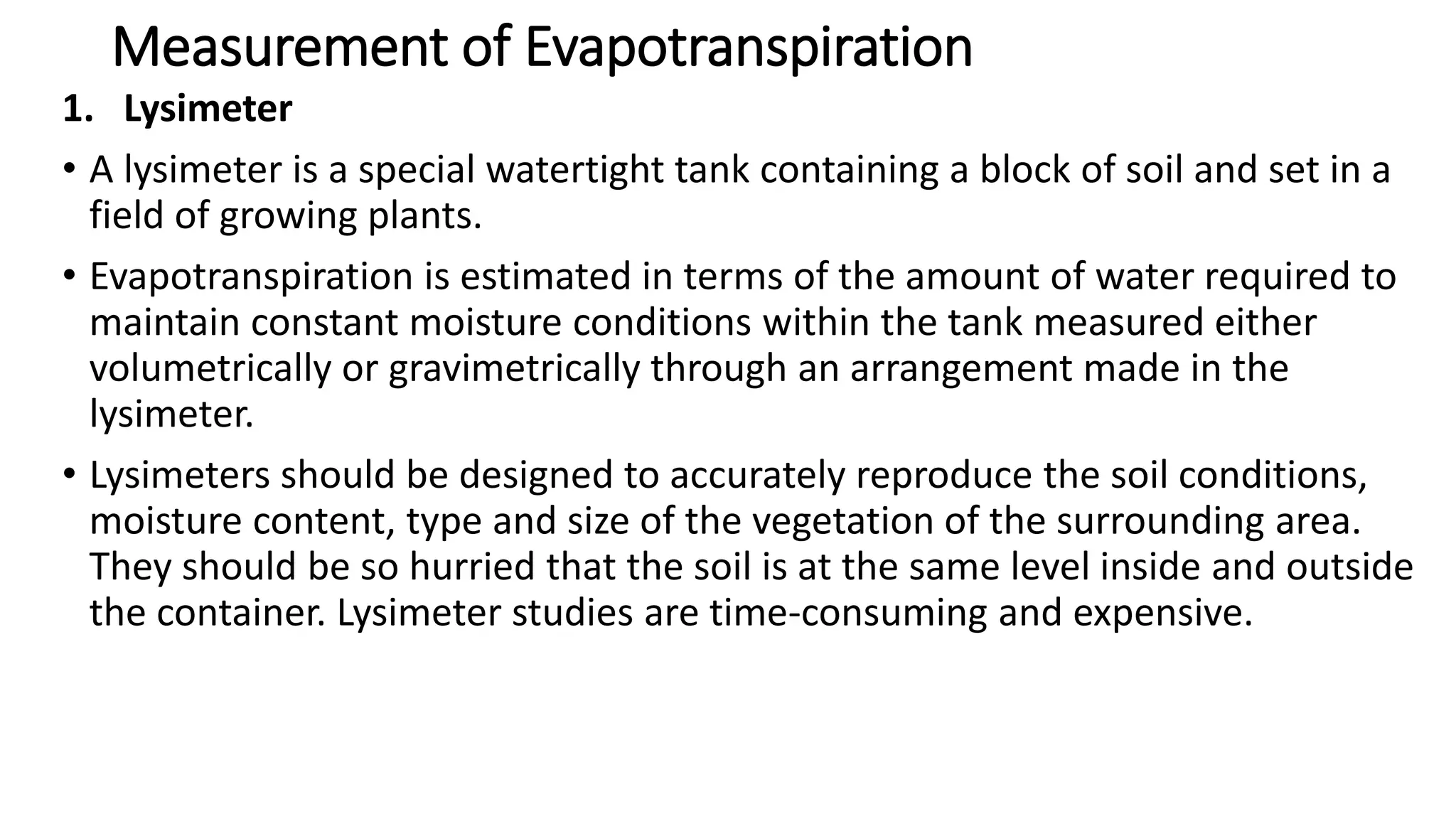
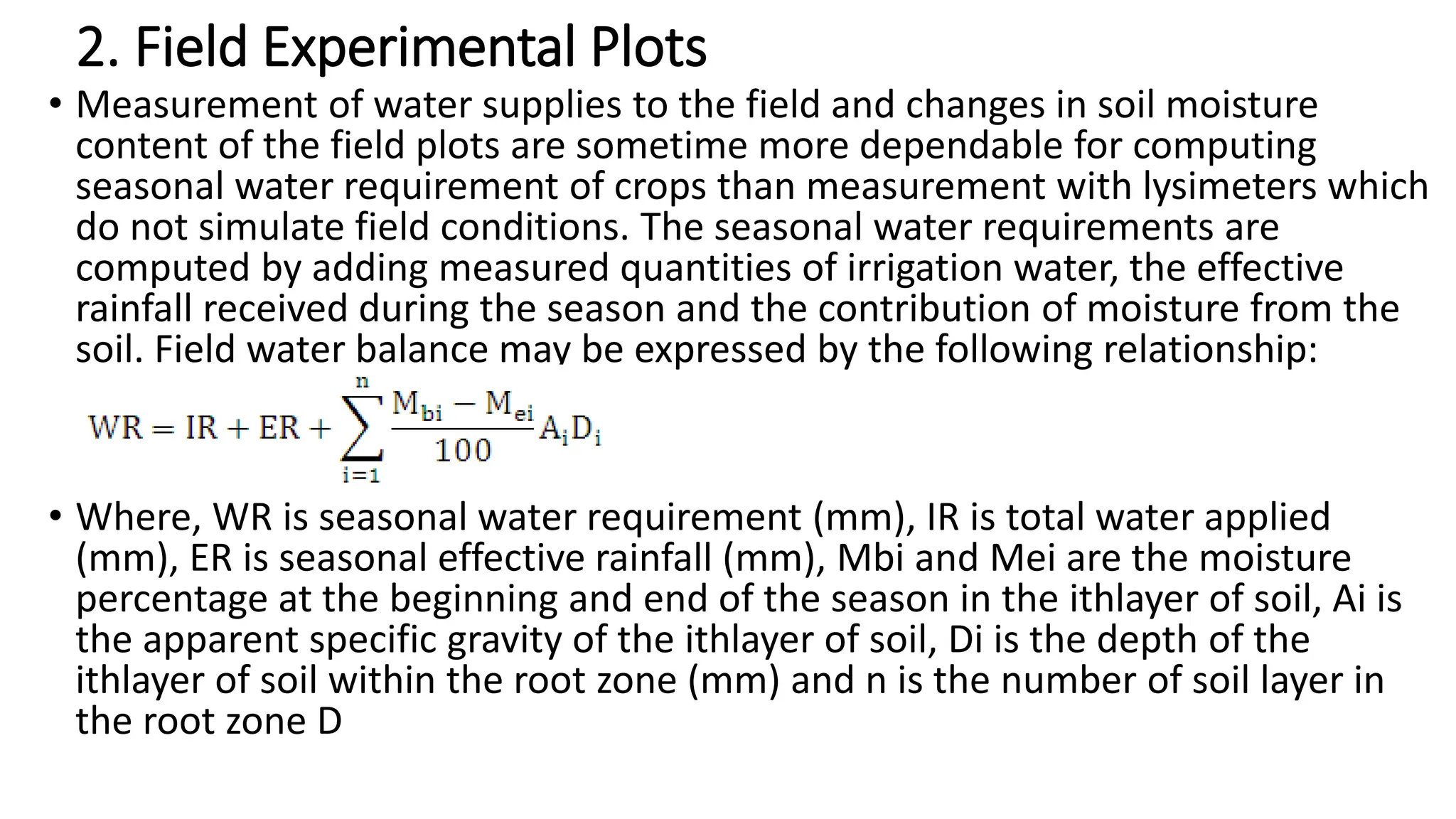


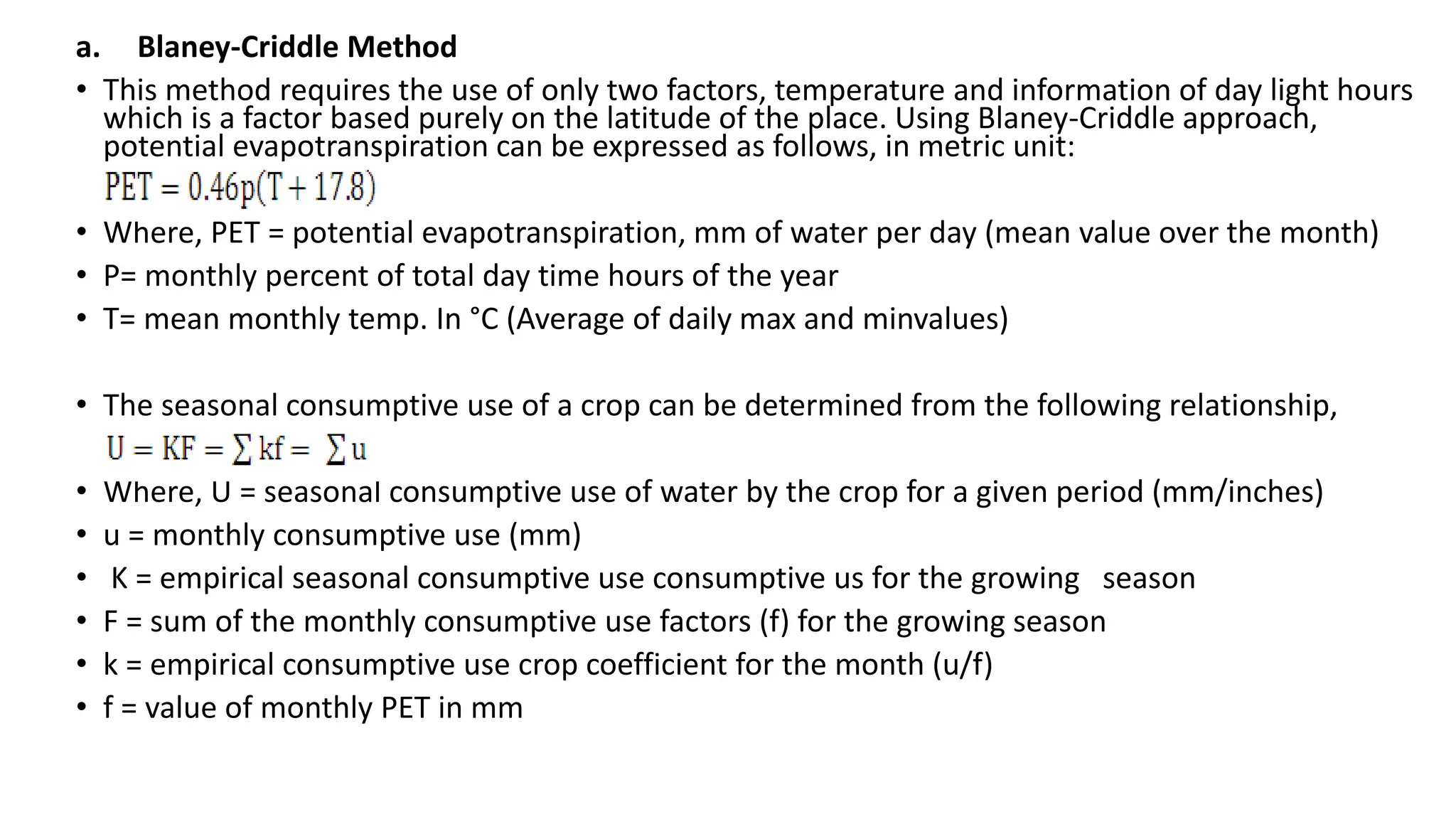

![4 FAO Penman-Monteith Method
• The FAO Penman-Monteith method is used to estimate reference
evapotranspiration. The equation is:
• Where, ET0 = reference evapotranspiration [mm day-1]
Rn = net radiation at the crop surface [MJ m-2 day-1]
T = mean daily air temperature at 2 m height [°C]
u2 = wind speed at 2 m height [m/s]
es = saturation vapour pressure [kPa]
ea = actual vapour pressure [kPa]
es - ea = saturation vapour pressure deficit [kPa]
Δ = slope of vapour pressure curve [kPa°C-1]
Υ = psychometric constant [kPa°C-1]
• The reference evapotranspiration, ET0, provides a standard to which:
a) Evapotranspiration at different periods of the year or in other region can be
compared.
b) Evapotranspiration of other crops can be related.](https://image.slidesharecdn.com/hydrologynotes-240329211811-b3ef44d7/75/HYDROLOGY-NOTES-pptx-40-2048.jpg)
